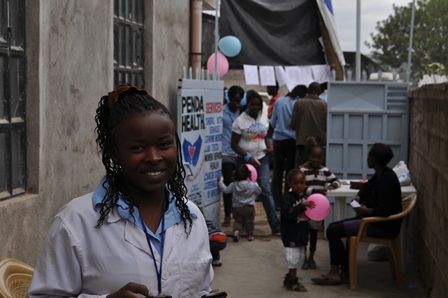I can vividly remember that cool, languid afternoon when James was brought into my office. His bloodshot eyes, flared nostrils and severe wheezing were characteristic of an asthma attack. No sooner had he sat down, the nurse on duty brought the nebulizer, already anticipating my next move.
It only took five minutes of nebulization for James’s distress to subside significantly, and after fifteen minutes, his distress had all but disappeared. James had been using an ineffective treatment to control his asthma, and on prescribing an inhaler for him to use, he explained that he couldn’t afford it. It cost half of his daily wages. Cliché as this scenario may be, it serves to highlight some of the problems faced by most Kenyans on a daily basis such as the unaffordability of quality healthcare services, and lack of a universal health insurance.
However, Kenyans have a knack for improvisation and innovation, and in many ways make little resources go a long way. When we are too poor to afford healthcare services, we pool together meager resources in the “Harambee” spirit (“Harambee” is a tradition of community self-help, whereby people pull together resources for a common goal – it’s a good example of crowd funding). When we need a fast and safe way to send money or save money, we develop a mobile platform: M-pesa. When we need a way to be productive during the long commute to work we install Wi-Fi into our “matatus” (public buses).

Kenyans can access health insurance by using savings from their mobile money (M-Pesa) accounts. (Photo cred: www.govtechnology.com)
The healthcare sector has not been left behind: one good example is Changamka Micro Health, which through its product “Linda Jamii” allows Kenyans to access health insurance by using savings from their mobile money (M-Pesa) accounts. Another innovator, Penda Health, provides quality healthcare at an affordable price to a market segment willing to pay for quality, but unable to afford the exorbitant price of services provided by the established healthcare provider chains. Both these organizations are part of the IPIHD global network of health care innovations.
These are a few examples of new and promising approaches for improving the health of the poor in Kenya through their provision of affordable healthcare and access to health insurance. But these organizations currently represent only a small piece of the broader healthcare market. If they are to make a real dent on the state of healthcare in the country, they need to figure out how to work with others in the health system. It was with that in mind that I, a doctor who has practiced in Kenya, have been working with the IPIHD team to take a closer look at the broader healthcare landscape in Kenya. Some of the questions I’ve been trying to answer with my research are:
- Who are the major players in the public and private sector in the payer, provider and pharmaceutical sectors?
- How is the healthcare sector regulated in Kenya?
- What are the sources of finance for entrepreneurs within the healthcare sector in Kenya?

Penda Health nurse and patient. (Photo cred: www.pendahealth.com)
My research into these questions has revealed a few key findings. First, the private sector funds approximately 67% of Kenya’s healthcare sector — the public sector only funds 33% of the total healthcare expenditure. The private sector is largely fragmented and poorly regulated, with many players such as hospitals, clinics, pharmacies and laboratories spanning across the entire value chain of healthcare provision. Each of these providers’ services varies in quality. The large healthcare chains compete for clients with small practices which, due to poor regulation, may be run by a doctor, nurse or even a clinical officer. In contrast, in most Western countries such as the US, healthcare provision is dominated by large players who are increasingly buying out individual smaller practices, which are predominantly run by doctors thereby leading to greater standardization of services.
Secondly, only 11% of the total population in Kenya uses health insurance. Most Kenyans pay for their healthcare “Out of Pocket.” There are many reasons for this poor uptake of health insurance, but the prime reasons include the lack of universal health coverage, expensive private health insurance, and a culture that doesn’t value the need for health insurance. In contrast, the US and the UK have a culture in which the value for health insurance has been inculcated into society, evidenced by the good uptake of health insurance through the NHS in the UK and Medicare/Medicaid in the US.
The Kenyan healthcare environment, with its lax regulation, fragmentation, variable quality, and numerous delivery gaps provides ample opportunities for enterprising innovators to test their ideas.
IPIHD, through its growing innovator and supporter network has a mission of bringing together and driving greater collaboration among key private sector stakeholders, investors, government, academics and innovators, collaborating with local tertiary learning institutions in creating knowledge around healthcare innovation and by developing programs that influence healthcare policy especially towards innovation and social entrepreneurship.
IPIHD strives to spark a positive spirit of innovation in the healthcare sector in Kenya, aimed at solving the fundamental problems of healthcare provision in my country so ultimately other Kenyans like James will have access to the health they deserve.
Interested in learning more about innovation in Kenya? I will be publishing a white paper detailing additional findings from my research into the Kenyan healthcare ecosystem. Stay tuned!

